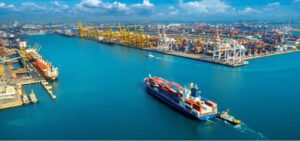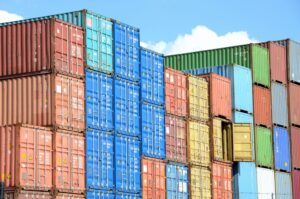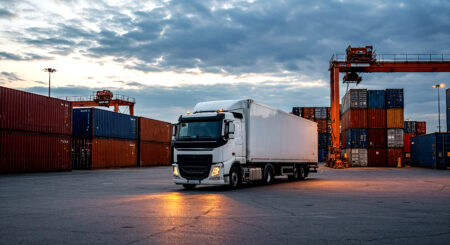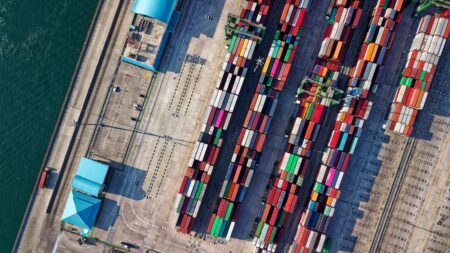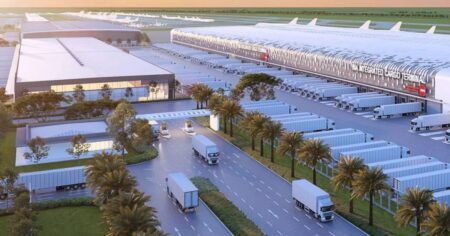
The world has always been changing, but it is currently in a state of flux. Business transformation, technology disruption, and geopolitical issues are reshaping the world’s order. Logistics, like all other fields, is evolving. However, the rate at which the logistics sector is changing creates both risks and opportunities for the entire eco-system.
He says, seven key areas in logistics must be understood and prioritized.
Technology
Digital Transformation is essential for survival, opportunity, and growth. Given the low adoption of technology in logistics, there is a significant opportunity to serve customers, increase efficiency, and reduce costs. It is critical to understand why we must prioritize technology. Technology is changing every aspect of life.
The integration of portals and the implementation of community systems will ensure seamless data flow along with reducing errors and multiple data entry. Technology will take transparency to the next level, which we have seen was critical during pandemics and geopolitical crises.
Customer
Today’s customer is changing his expectations at breakneck speed. Customers expect faster shipments that are more transparent and cost less. This will further compel logistics service providers to experiment with new models, technology, processes, and KPIs, putting strain on operations and profitability.
Globalization has altered the supply chain and distribution of Manufacturers/B2B in ways that were previously unimaginable. Customers with high volume will change the rules of the game, and the logistics industry will change for the better.
Competition
In economics, we learned that competition leads to lower prices, higher quality/service, greater variety, and more innovation. In today’s VUCA world, however, no one knows who your competitor could be. This is already happening on a large scale in next generation logistics, as we have seen.
At the moment, the logistics sector has the highest number of startups implementing new business models. This is aided further by the inflow of venture capital funding into logistics startups. These startups, which are asset light or even asset less, use technology to create new space or offer lower rates with the fastest response time and transparency in pricing and tracking.
In the coming years, the importance of data and analytics will skyrocket, and the use of Artificial Intelligence and machine learning will benefit all areas of Supply Chain, particularly Logistics, such as forecasting, distribution, load, network, and route planning. These will aid in better capacity utilisation while also lowering costs and increasing efficiencies.
Collaboration
Collaboration at all levels will be seen in the Next Generation of Logistics. Customers and logistics service providers will benefit from consolidation and collaboration in order to focus on core business and long-term strategies.
Logistics service providers are best placed to take the lead in increasing collaboration among all logistics models, including carriers, rail, sea, air, CEP, freight forwarders, and trucking. This will result in better capacity utilisation, increased efficiency, and cost savings, but most importantly, improved customer service.
Many industries, particularly multinational corporations, have stringent processes in place to select logistics service providers and are concerned about brand image. This will change in the New Logistic World as Industry attempts to collaborate with the best service providers.
Environment, Health, Safety and Security (EHSS)
Today’s most talked-about topic is the impact of global warming on the environment. According to various studies, the logistics industry accounts for approximately 24per cent of CO2 emissions, and this figure is expected to rise if appropriate steps are not taken. In India, the pyramid of modes of transport and commodities transported is reversed, with road transport being the most polluting, rail transport being limited, and waterways being negligible. In the coming years, due to various government initiatives and support, an increase in the use of less polluting modes such as inland waterways and coastal shipping is expected, opening up new frontiers for logistics. Road infrastructure improvements, more dedicated freight corridors, and fuel-efficient vehicles will all help to reduce environmental impact.
Under PM Gati Shakti, the Ministry of Commerce and Industry of the Government of India has released a comprehensive report on “Freight Greenhouse Gas Calculator – User Instruction Guide” and an online GHG calculator. The environment impact can be calculated by entering the mode -direct or multi modal, commodity, weight, origin / destination, and transport mode road/rail, etc. This is the first of many positive steps toward environmental protection.
Most importantly, even though the government is taking initiatives, it is the responsibility of stakeholders, particularly industry and customers, to demand and support higher standards from logistics service providers.
Standardization
Because the logistics industry is fragmented and unorganised, different standards are followed by various stakeholders. Lack of standardisation increases work, increases costs, and makes collaboration and interchangeability difficult.
We can anticipate the emergence of physical and digital standards in next-generation logistics.
The Physical Internet (PI) is a network of digital transportation networks that are being deployed to replace actual road networks. Physical objects (packages/shipments) can be moved efficiently.
Skill Development
Most people who hold senior positions in logistics did so by chance or as part of a family business. They got to where they are now through hard work, experience, and a lot of trial and error. The importance of supply chain and logistics professionals in the corporate world has grown in recent years, particularly as a result of pandemics and other disruptions. The most frequently discussed topic in various board meetings or TV interviews with CEOs and CFOs is how they handle supply chain and logistics. The best time for Logistics is now.
More qualified people with specialisations in supply chain and logistics are joining the industry today.
As we can see Logistics skill development will take place at various levels. First, collaboration with academics and institutions to ensure that curriculum is more practical and better designed to meet the needs of the industry. This reduces industry complaints that freshers cannot be used immediately and require practical training when they join. In the future, there will be more collaboration on internship and industry projects.
Skill development will be critical for moving into the New Generation of Logistics.
To summarise, fundamental changes in the logistics industry, combined with disruption and technological advancements, will reshape the industry. This brings with it both risks and opportunities. However, a more focused approach to each element will generate more opportunities, as we will see for the first time.

